










The home renovation industry is booming, and that’s reflected in the cost to upgrade a home. Home Guide says remodeling a kitchen costs $25,000 on average, and a bathroom renovation runs around $10,000. Though rates fluctuate

depending on a host of variables, renovations can cost $15 to $60 per square foot depending on the project.
The average homeowner wants to save as much money as possible when renovating their home. Many think doing
much of the work themselves is the easiest way to keep costs low. What some homeowners may not realize is that DIY can be costly and prove a big hassle in the long run. The following are some hidden costs of DIY and renovating in general.
► Time. DIY projects are a major drain on free time. Homeowners taking the DIY route typically work on weekends or after work. Few people can take off and devote their undivided attention to a remodel like a contractor can. Time is a valuable resource that is not renewable. Therefore, think of a DIY project in terms of what it would equal in lost wages. Because homeowners are not professionals, a DIY project may take double the time it would take a contractor. It may be worth it to simply hire it out.
► Mistakes. Many resources are available to help DIY enthusiasts work on a project, but there are still tricks and techniques learned after years on the job. DIYers may damage their homes by taking shortcuts or not understanding how to do a job properly. A plumbing mistake, for example, may lead to flooding that damages another room in the home. And such mistakes may not be covered by homeowners insurance policies.
► Fines. Permits are required for many home improvement projects. Forgetting to obtain permits or not realizing one may be necessary could subject you to hefty fines and/or




force the job to be redone so it’s up to code. Professionals likely know the rules regarding permits and often include the cost of acquiring permits in an estimate.

► Remediation. It’s only after opening up walls or removing floors that you may discover issues you did not anticipate, such as termite damage or mold. These unforeseen factors can drive up the overall costs of a project.
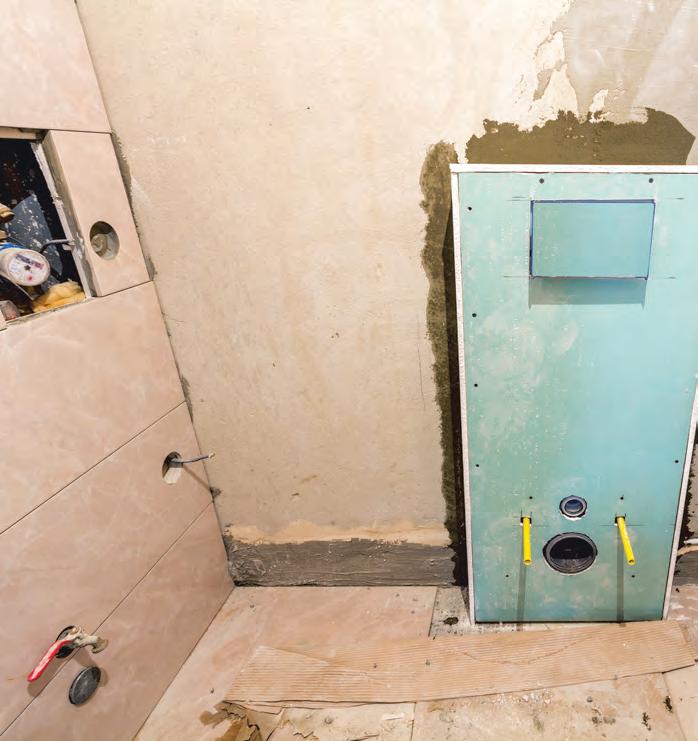
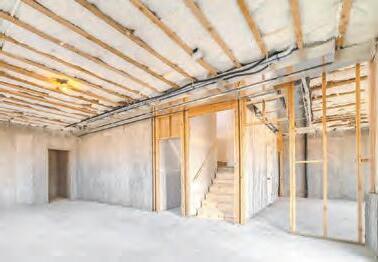
► Disposal. Removing old building materials or gutting a room is part of many renovations. Chances are this refuse simply cannot be left at the curb for trash pickup. As a DIYer, you may not factor the costs for a dumpster or the time and money required to haul debris to a recycling or landfill center.
► Tools. DIYers may have to purchase tools as they engage in new projects. These expenses can add up and negate the savings of doing some of the work yourself.
DIY projects may initially seem like a way to save money, but weekend warriors should calculate the hidden costs associated with DIY renovations before deciding to do some work on their own.


withoutsacrificingcomfort.Formore completecontrolandgreaterpeaceofmind, turntotheexpertsatChappellCentral.




StatePoint
Want to live your best backyard life? Experts say outdoor flooring can help you do it.
“Outdoor flooring can keep grass healthy by providing a solid path over high-traffic areas and define areas of your yard for different uses,” said landscape designer Doug Scott of Redeem Your Ground. “However, as with interior decorating decisions, the materials you select can impact how you can use those spaces. And because you’re outside, there is Mother Nature to consider.”
To help homeowners make smart outdoor flooring decisions,

Scott has partnered with lawn care equipment manufacturer, Exmark, to offer these insights:
► Moss. Moss and other “steppable” living ground covers are perfect for areas with minimal foot traffic, such as shady retreat spaces. The major concern is your yard’s ecosystem. If growing conditions are right, it’s incredibly low maintenance. But when conditions aren’t favorable, it can become a maintenance nightmare. Before making any purchases (costs can range greatly), research if your yard can support this type of organic flooring.
► Mulch. Mulch is an affordable option that keeps outdoor spaces looking natural. Mulch can be used to decorate landscape beds, and as flooring for pathways, play areas, and dining or living areas. While maintenance is low, mulch will need to be replenished periodically as colors fade and the elements wear it down.


► Aggregates. Aggregates include crushed granite, pea gravel and slate chips. Aesthetically versatile, cheap, and easy to install and maintain, aggregates add a natural look, and make a great option for areas with drainage issues. Because they tend to get worn down or washed away, you’ll need to replenish them occasionally or build a border with stone or brick around them.
Before moving forward, consider that pea gravel is great if you want a softer flooring option, but note that its give can create unstable footing. And, if you have young kids, you might want to avoid aggregates entirely.






“I don’t think I know a kid under age 12 who can resist the temptation to pick up a handful of gravel and throw it,” Scott said.
► Wood. Wood flooring is incredibly versatile. It can be cut, customized, painted and stained to fit any style and space and provides a smooth, level surface for entertainment and furniture. The type you choose should depend on your budget and how much maintenance you’re willing to do. Manufactured wood can be expensive, but thankfully requires very minimal maintenance. Natural wood, on the other hand, requires regular staining and sealing.

► Concrete. If you’re looking for a flat, stable surface, concrete is the best choice on the market. While it might seem less chic, it can always be beautified with stains and stamp patterns mimicking brick or stone. While fairly low-maintenance, concrete is prone to cracking, and stamped concrete will need to be sealed periodically. Those repairs can become annoying and expensive down the line.
“If your outdoor space is above tree roots or areas prone to settling, concrete is probably not the right choice for you,” Scott said.

► Stone. Both natural stone and manufactured pavers are durable and a great way to transition from formal to natural in your yard. Natural stone is generally the most expensive outdoor flooring choice, but its durability and versatility makes it well worth it. Manufactured pavers come in a variety of colors, shapes and sizes, and have the added benefit of affordability. While both options require periodic sealing and staining to retain their appearance and durability, if done right, they’ll last you many years.

Scott offers more insights in “Outdoor Flooring,” a recent video from Exmark. To watch the video, visit Backyard Life, which is part of a unique multimedia destination with a focus on helping homeowners make the most of outdoor spaces.
“Now that you have a variety of outdoor flooring ideas handy, all there’s left to do is bring your dream yard to life,” Scott said.

“I don’t think I know a kid under age 12 who can resist the temptation to pick up a handful of gravel and throw it.”
- Doug Scott
MORTON — The Lower Sioux Indian Community is building not only homes, but a future full of possibilities, out of hemp, or more specifically hempcrete. After years of work, the community is celebrating the construction of the first hempcrete home in Minnesota and the start of brand new opportunities for community members.
“It’s a great project for Minnesota. We’re the first tribe in the county to build one of these,” said Earl Pendleton, vice president of the Community Council of the Lower Sioux Indian Community. “It is a proud moment to finally be inside.”
Construction of the first hempcrete home began in July, with an open house held on July 24, to

give residents and the public a chance to watch as the hemp-based building material was blown into the walls of the home. The duplex home, when completed, will be used as emergency housing for community members in need. A single-family home, to begin construction this year it is hoped, will be used as rental housing.
“This has always been the goal, to build healthier homes for the community members, to save them money every month on cooling and heating,” Pendleton said.
The Lower Sioux has been working closely with Americhanvre of Allentown, Pennsylvania, a construction company specializing in hemp building. Cameron McIntosh of Americhanvre has been out to Minnesota several times to assist the
Lower Sioux with the project.
“This has been very special — you can feel it,” McIntosh said at the open house. “This is probably one of the most special projects we have been on.”
The Lower Sioux hemp house is starting to get statewide attention.
In early August, Minnesota Gov. Tim Walz and Lt. Gov. Peggy Flanagan visited the crew and the first hempcrete house. The house was also open for public visits during FarmFest. The Lower Sioux hempcrete construction crew also continues to train on new building processes. They recently went to Nebraska to learn how to build with hempcrete bricks.
“None of this happens unless you have the right people involved,” Pendleton said.
The hempcrete home construction began like most homes do, with the construction of a wood frame. A local construction crew led by Denny Desjarlais had the frame and roof up in two weeks, ready for the hempcrete.



“Denny and his crew that he assembled, at every point along the way, they’ve been amazing, meeting deadlines no one thought they could meet,” Pendleton said.

The Lower Sioux had some experience building with hemp, as they constructed a shed using hempcrete last year. They did the application completely by hand, which is doable — cost-effective but labor-intensive.
“It is the most accessible way to do hempcrete, to do it by hand,” McIntosh said. “But it is a labor of love. It takes a long time to do it.”
In July, McIntosh brought along a new way of installing hempcrete, the Ereasy spray machine. The machine allows the hempcrete material to be sprayed directly into the wall cavities, much like traditional spray insulation. It allows crews to work faster. The crew at the Lower Sioux were able to complete the hempcrete application process in three days.
“It is an example of how you can actually replicate this model for the tribe to build not only affordable housing, but houses that are more affordable to operate,” McIntosh said.
According to McIntosh, a hempcrete home can be 30% to 70% more energy-efficient than traditional construction, depending on the energy usage of the residents.
Another benefit of hempcrete is its ability to control moisture in a home. Because of its structure, hemp is able to pull out the moisture in homes, lowering humidity and decreasing the ability for mold to grow.
“Hempcrete does several things very well. It’s a great insulator, it is highly fire-resistant and it is also resistant to pests,” McIntosh said. “In addition, it creates a healthy environment. We are using plant-based insulation.”
Hempcrete is created by mixing hemp hurd — which is the woody core of the hemp plant stem — with a lime binder and water. There are no other chemicals involved.
While currently the lime binder for hempcrete is still mostly being imported from France, the hemp itself can be very local. The hemp inside the Lower Sioux duplex is Minnesota-grown, but that is not the end goal.

“Hopefully in the near future it will be Lower Siouxgrown,” McIntosh said. “This community is able to provide themselves with the raw material, which is the hemp hurd.”
HEMP: Page 8

The vision for the Lower Sioux is not only to build affordable housing with hempcrete, but to create an entire hemp economy based on the reservation. The hemp will be grown and harvested by community farmers, processed at a hemp processing facility to be built near Jackpot Junction Casino. The hurd will be used for hempcrete, which will then become homes constructed by Lower Sioux construction crews. There will also be opportunities to sell the processed hemp and hempcrete blocks to other businesses and individuals.
“This is all about offering jobs that aren’t casino jobs,” Pendleton said. “It’s about keeping our money local.”


The Lower Sioux already has about 100 acres in hemp production, with the possibility of around 400 total. Pendleton said the community will also probably partner with farmers outside the community to grow hemp as part of the project.
The community has already purchased the equipment it will need to process around 2,000 acres of hemp a year. Currently it is housed in Olivia, but once the hemp facility is constructed on the reservation, the equipment will be moved to its new home. Pendleton said construction on the hemp campus could begin as early as this year.
McIntosh feels the Lower Sioux Community’s plan is a good one, especially because the hemp business in the United States is far behind other nations.

Growing hemp is the easy bit, but processing and finding a buyer for the end raw material can be extremely difficult. The way the Lower Sioux is doing it means they are their own customer base.
“They are going to be feeding their own work,” McIntosh said. “It’s the right way to do it.”

There is a lot of room to grow in hemp, McIntosh said, and the Lower Sioux Community is setting itself up to be able to take advantage of that. Hemp fibers and hurd can be used for a vast array of products — from building construction to animal bedding to clothes.

“The sky is the limit” in fiber and industrial hemp production, McIntosh said. “This is a generational opportunity for fiber/industrial hemp.”
Members of the construction crew work on spraying hempcrete into the walls of a duplex at the Lower Sioux Indian Community. The black construction wrap is a breathable product that will allow regular siding to be put on the outside of the house while still allowing the hemp to draw moisture out of the building.

A spray system is the quicker way to apply hempcrete, rather than doing it by hand. The crew at the Lower Sioux were able to complete the application process in three days in late July.

Figuring out how much home you can afford is one of the most important questions you’ll need to answer before you begin house hunting. But as home prices and interest rates have increased in the past few years, you may be wondering how your buying power has changed.
To get a rough estimate of what you can afford, most lenders suggest you spend no more than 28% of your monthly income — before taxes are taken out — on your mortgage payment, which includes principal, interest, taxes and insurance. In addition to having a firm grip on your income and expenses, it’s important to understand the role the following factors play in how
Lenders look closely at your credit score when determining whether you qualify for a loan. Generally, the higher your credit score the more options will be available to you, including better loan terms and a lower interest rate. Because of the large role credit plays in the homebuying process, make sure you understand how your credit score is compiled, how to get a copy of your credit report and how to build strong credit.
It’s important to watch mortgage rates carefully, because when rates are lower you may be able to afford a larger mortgage. Although 26 million mortgage-ready potential homebuyers had the capacity to afford a $400,000 mortgage at a 3% interest rate, the total falls by 3 to 4 million with each percentage point gain, according to Freddie Mac research. In short, a small increase in rates can make a home that was once affordable, unaffordable.
Bear in mind that similar borrowers may receive notably different rates based on the lender, so you may want to shop around to increase your buying power. In fact, you can potentially save $600$1,200 annually by applying for mortgages from
multiple lenders, according to Freddie Mac.
Typically, homebuyers need to make a down payment of at least 3%, and generally between 5% and 20%, of their home’s purchase price to qualify for a mortgage. That means as home prices go up, so do down payment requirements. Talk to your lender about all the down payment options available and explore assistance programs. Each year, many state, county and city governments provide financial assistance for people in their communities who are well-qualified and ready for homeownership. Requirements vary, but if you are eligible you could receive down payment assistance ranging from a few thousand dollars to larger amounts, depending on your needs, your qualifications and where the home is located. Additionally, many programs specifically benefit veterans, Native communities and workers employed in education, health care,
law enforcement and firefighting. Your lender or housing counselor should be able to point you in the right direction of these programs.

Don’t forget that when you get a mortgage, you’ll need to pay closing costs, which likely include an appraisal fee, credit report fee, tax services fee and more. These costs will generally run between 2% and 5% of your purchase price.
To crunch the numbers, start by using Freddie Mac’s Homebuying Budget Calculator, then learn more about the homebuying process with Freddie Mac’s CreditSmart. Visit creditsmart.freddiemac. com to get started.
If you think you’re ready for homeownership, you’ll want to work closely with your lender to determine what you can comfortably afford. It’s their job to cover all bases so that your final number is within your means and aligns with your financial goals.

Nathan Houdek,
materials that are used to make a roof more
of the fortified building programs at the Insurance Institute for Business & Home Safety, explains the items. The three were on site of a Habitat for Humanity Serving Winona County home in St. Charles Monday, Aug. 28, 2023.






ST. CHARLES, Minn. — Among the figurative whirlwind of legislation passed by a DFL-controlled Minnesota Legislature was an initiative intended to protect Minnesota homes from literal whirlwinds and worse.


The Strengthen Minnesota Homes legislation passed in 2023 sets up a grant

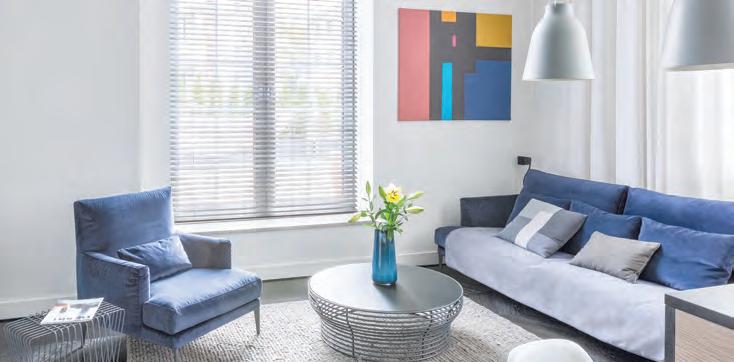
program to help homeowners and builders bridge the gap between meeting minimum building standards and making buildings more resistant to storm damage.
The program is still in its planning stages. Some state leaders working to implement it toured a construction site in St. Charles,
Minnesota, Monday to see a home under construction by Habitat for Humanity. The building, once completed, will likely meet insurance standards as a “fortified” home and qualify the owners for insurance breaks under programs Strengthen Minnesota Homes was modeled after.
Grace Arnold, Minnesota Commerce Commissioner, was at the site. Arnold said Minnesota is consistently a top state for wind and hail storm damage insurance claims.
Fred Malik, vice president of the fortified building programs at the Insurance Institute for Business & Home Safety, demonstrated materials and items builders will use to construct the roof. On their own, they don’t look out of the ordinary. Materials include ring shank nails, sealant tape, stronger sealant material and capped nails to secure the sealant material. However, the items almost double the bare minimum $750 roof costs of the duplex, according to John Corcoran, director of operations and construction at Habitat for Humanity Serving Winona County.
Still, he added, “That’s nothing compared to a natural disaster.”
Malik noted similar programs have been set up in Gulf Coast and West Coast states. Alabama has


a grant program that pays builders or homeowners for the difference in construction costs between minimum standards and the IIB&HS construction materials and standards. However, the concept hadn’t caught on in the Midwest yet until Minnesota’s introductory legislation.
“Wind is wind and rain is rain,” Malik said. “At this scale, they don’t really behave any differently.”
Minnesota isn’t the only state exploring incorporating storm resiliency into construction incentives. Nathan Houdek, Wisconsin Insurance Commissioner and Dan Hereth, Secretary of the Department of Safety and Professional Services, joined the tour to learn about Minnesota’s new program in planning one of their own.
“When we experience ever greater number and stronger storms, we need to think beyond minimum standards,” Hereth said.
In its first year, Strengthen Minnesota Homes
has $1 million in funding to get set up the staff and framework for a grant program to be implemented later.
Although the program will be ironed out later, Corcoran said he opted for higher standards for the Habitat for Humanity home because it’s a long-term cost savings even without the grant.

Becca Seidel, deputy executive director of Habitat for Humanity of Minnesota, who visited the site, said she was glad to see the technique put to use on a Habitat house for multiple reasons. The owners who move in will likely see lower insurance costs in the future and the home will hold more value with its resiliency.
“We don’t want the houses we build now to be the poverty housing of the future,” she said.
It’s part of Habitat for Humanity’s longterm approach to building, said Jeremy Beier, sustainable building director for Habitat for Humanity Minnesota.
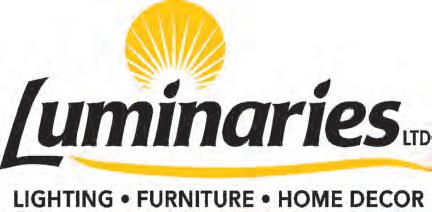
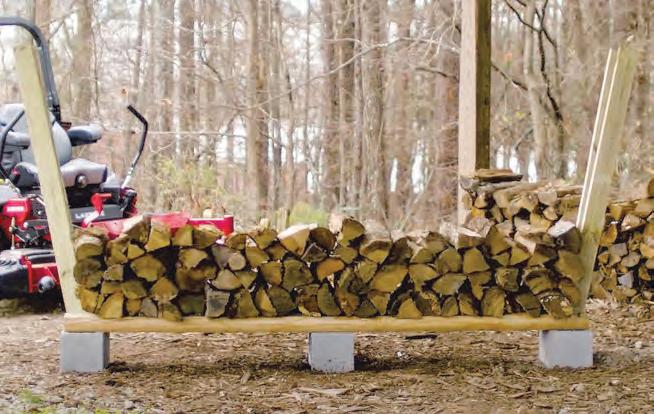
If you’re like many outdoor enthusiasts, the warm months mean fun bonfire parties with sing-a-longs, scary stories and s’mores, right in your backyard. But having a wood-burning firepit requires having a dedicated place to store firewood.

“A firewood rack is not only important for an organized yard, it protects your fuel source from moisture, making for less smoke and more efficient burning. While it might seem like a complicated build, it can be a simple, easy and quick weekend DIY project that will greatly improve your backyard experience,” said Jamie Briggs, director of marketing at Exmark, a leading manufacturer of lawn care equipment. That’s the idea behind this “Done-In-A-Weekend Project” from Exmark.
Cut
Large
► (2) 8-foot landscape timbers (pressure treated)
► (3) standard cinder blocks


Small Rack
► (2) 10-foot 2x4s (pressure treated)

► (2) standard cinder blocks

1. Measure, mark, and cut your 2x4s into 5-foot pieces.
2. For the smaller rack, lay the two cinderblocks side by side, holes up. For the larger rack, place two of the cinderblocks at either end of the length of the landscape timber, holes up. Place the third cinderblock in the middle of the other two to work as support.
3. For the larger rack, lay the two lawn timber planks across the cinderblocks and then check to ensure they’re level.
4. For the smaller rack, turn the 2x4s so the wide sides are facing inwards. For the larger rack, place the cut 2×4 pieces into the holes of the cinderblocks, small sides facing inwards.
5. To ensure the security of your build, resituate the two lawn timbers so they’re as tightly placed against the 2×4 planks as possible.

6. Load up your wood!
To view the full video tutorial, visit Exmark’s Backyard Life site at backyard. exmark.com, a multimedia destination that provides homeowners with everything from grilling tips and design projects to gardening and lawn care advice.
“Our firewood rack gives you plenty of storage so you can keep your bonfire blazing for an entire party. It’s also one of the simplest builds we’ve ever done, and you’ll be able to make quick work of it over your weekend downtime,” Briggs said.
StatePoint

From leaving on vacations and weekend getaways to heading out for a hike or to a sporting event, frequent in-and-out traffic in summer can leave our spaces a mess. While a deep clean can be reserved for fall, home organizing expert Abby Lawson of the popular Abby Organizes blog says there are quick ways to tidy up the home now.
A new survey by Duck brand finds 76% of people feel “overwhelmed” by their family members’ mess. To help control clutter near the entryway, install Duck brand EasyMounts Interior Drywall J Hooks to give items like beach bags, hats and umbrellas a designated spot. Lawson says she also likes to put a basket by the door, so her kids have a place to toss their shoes.



“Helping everyone adopt a routine when they come into the door encourages tidiness,” Lawson explained. “If you have little kids, move the hooks to their level, so hanging their bag becomes part of their routine.”
The outdoor season brings its fair share of challenges like sunburn, bug bites, bee stings and rashes. Stock a cabinet with must-have emergency supplies. Lay Solid Grip Shelf Liner with Clorox on the shelf, so surfaces stay clean and dry from leaking bottles and sticky spills. Lawson keeps these essentials on a shelf near her entryway, so it’s easy for her family to apply sunscreen or bug repellent quickly on their way to the park or pool.
More than half of the people surveyed say clutter in the living room is the “most annoying” mess their family members make on a regular basis. Lawson says she uses hooks on the inside wall of her hall closet to hold an organizer. This creates extra storage for small toys as well as hand soap and toilet paper. She also recommends that households establish a consistent cleanup time to “reset” the room.
“No matter how much we try to clean up,
staying organized will come down to the habits that we have,” Lawson said. “Institute a daily or weekly reset where everyone in the family works together to get everything back to where it goes. That will keep the clutter from piling up.”

From tongs to skewers, we often use the same tools to cook in the summer. Lawson suggests storing go-to grilling gadgets in a caddy, so they can easily be taken from inside to out. She also says to divide drawers with small trays and use shelf liner with fun prints and patterns under the trays to add a pop of color to the area. Additionally, put bulky items like egg, pineapple
and watermelon slicers in a basket on a higher shelf, so they don’t take up drawer space.
Whether you’re heading on a day trip or a road trip, the car can easily get chaotic. Lawson recommends putting an organizer on each of the back seats, so kids’ snacks, electronics and car games are easily accessible. These pockets can also be a handy place for hand sanitizer, trash bags and water.
Setting up these simple organizing systems with the help of useful products and organizing tools will encourage tidy habits for a neat home all season long.

StatePoint
Home organizing is more than a trend; it’s a lifestyle.
From streaming shows demonstrating how to color-code your pantry to magazines offering tips to declutter quickly and even a litany of organization products, there’s an abundance of information in the world of home organization. Yet, despite all this great content, younger generations still struggle
with staying organized. In fact, a recent survey conducted by Pollfish on behalf of Duck brand finds that nearly 75% of Gen Z and millennials, ages 16 to 42, need a better organizing system or routine at home. Here’s what these generations struggle with the most: ► Clutter is chaos. While about half of Gen Z and millennials clean and organize up to an hour a day, they still have an issue with
clutter. The survey finds that the kitchen counter is the biggest clutter hotspot, and car or house keys are the top misplaced items. Among their worst organizing habits, 54% of the younger generations throw everything into a junk drawer, while 40% say they don’t hang up their purse or jacket. Additionally, their top challenges to staying tidy are too much clutter and not enough room.
► Family dynamics. Living with messy family members is another top challenge. Less than half of Gen Z and millennials say their spouses and children pick up after themselves and more than 40% wish their significant other was neater/tidier at home. Most Gen Z and millennials (nearly 64%) feel they are the best at staying organized at home compared to others they live with: about 30% of Gen Z say their parents are the tidiest and 16% of millennials say their partner is the neatest.
► Personal preference. A quick and easy installation is at the top of their priority list when it comes to picking an organizing system, but 29% of Gen Z also favors stylish and modern aesthetics. Among the products they’re willing to try, Gen Z is more likely to use shelves while millennials chose a wall organizer. As for the cost, most will spend $26 to
$50 on organizing products.
► Space-saving solutions. More than 75% of survey respondents feel they have limited space to store items and 70% wish their backpacks, jackets and hats were better organized.



“Americans are embracing a ‘less is more’ lifestyle and prefer clutterfree spaces, but it’s clear they have challenges when it comes to tidying up,” says Angee Mantell, Insights & Innovation product manager at Shurtape Technologies, LLC, the company that markets the Duck brand. “Simple solutions can help people of all ages create homes that are more efficient, livable and meet the demands of their busy lifestyles.”

From the entryway to the garage, Duck brand’s EasyMounts HeavyDuty Drywall Hooks and Heavy-Duty Drywall Tool Holders help restore order to high-traffic areas and give





out-of-place belongings, such as key, bags and garage gear, a designated home while keeping them off the floor. The universal mounting system comes in a modern matte finish and installs in drywall without the need for tools, solving the problem of limited storage. For other expert tips on home


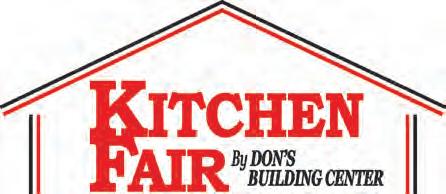
organization, visit Tidy Up with Duck brand at www.duckbrand.com. While some factors are beyond one’s control, such as the amount of storage space available and the behavior of housemates, smart organizational tools can minimize mess and stress at home, for all generations.


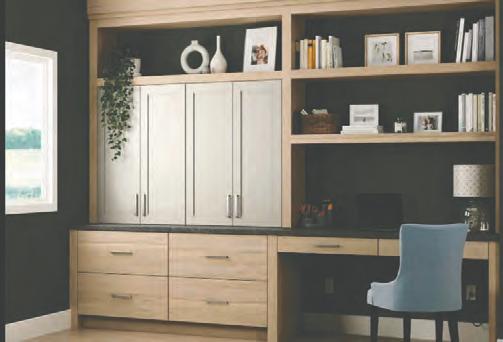
“Americans are embracing a ‘less is more’ lifestyle and prefer clutter-free spaces, but it’s clear they have challenges when it comes to tidying up.”
- Angee MantellPhoto from Shutterstock
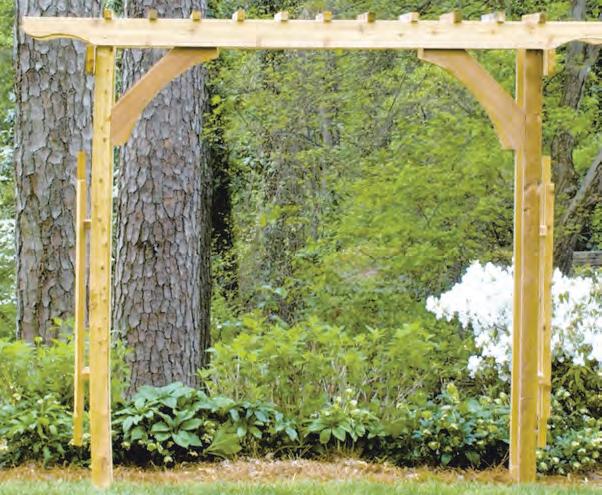
Are you dreaming about beautifying the backyard? Is your garden in need of some color and dimension? If you have the tools, a free weekend and the initiative, you can add charm and beauty to your outdoor space by building a garden trellis.
Here’s everything you need, and everything you need to know, to complete this “Done-In-A-Weekend Project” from Exmark, a leading manufacturer of lawn care equipment.

1. Cut boards down to size for the sides, top trellis and corbels.
2. Assemble the side sections.

3. Assemble the top trellis section by following the template found at backyard.exmark.com or by sketching your own design onto card stock.
4. Attach the top and sides of the trellis, ensuring the sections are square with one another.
5. Use the template to build the corbels.
6. Line corbels flush with the side posts and attach.
7. Apply wood sealer, and stain or paint (if desired).
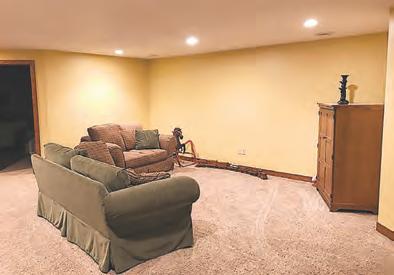
To download the complete instructions and template, and to follow along with the video tutorial, visit Exmark’s Backyard Life site at backyard.exmark.com, a multimedia destination providing homeowners with everything from grilling tips to gardening advice.

While this beautiful trellis is a bit of work, once complete, it can provide structure for vining plants to grow, create a bit of shade from the harsh summer sun or simply serve as a point of architectural interest in your garden.
